(Strasbourg 1882 - 1959)
The roofs of Périgueux
Watercolor
H. 34.5 cm; L. 26.5 cm
Signed, dated and located at the top. 1939/40
Provenance: Private collection, Strasbourg
Louis-Philippe Kamm will be from 1897 to 1901, student of the School of Decorative Arts in Strasbourg, then until 1908, he is on the benches of the Academy of Fine Arts in Munich. From 1908, he retired every year to Drachenbronn where his father acquired a forest house and where his grandfather was a teacher. Drachenbronn and Oberseebach are now his preferred places of residence. At the beginning of the 1910s, it was in Paris that he completed his training. There he discovered Courbet, Cézanne and the Impressionists. He became known to the public in 1903 in Strasbourg, on the occasion of the Strasbourg Artists' Salon which was held at the Château des Rohan. It was mainly in illustration and decoration that Kamm worked until the start of the Great War. In 1918, prisoner of war, he was interned in the Hameln camp from which he brought back many paintings and drawings. In 1919, he joined the Groupe de Mai, created and led by Balthasar Haug and Simon Levy and from the years 1920-21, he made stays and study trips in Savoy, in the South, but also in Florence, Ravenna. and Venice. In 1925, he was appointed professor of Decorative Arts in Strasbourg. In 1936, he moved to Oberseebach where he had just bought a house, that of Drachenbronn then becoming “s'Vacanzhiesle”. During the interwar years, he continued his career as an illustrator. In this area, in 1936, he gave his full potential by illustrating a hundred washes "L'Ami Fritz" by Erckmann-Chatrian, published by La Vie en Alsace. "It was one of the most extraordinary publishing successes in Alsace ... to such an extent that quite recently we decided to reissue the famous Alsatian", said Robert Heitz in 1973. In 1939, he was evacuated to Périgueux as well. other border workers neighboring the Maginot line. There he had obtained a contract for peasant frescoes for an Aquitaine castle that he was about to build when he received the order to return to Alsace. In fact, from 1940-41, he was informed that the occupier demanded his immediate return, otherwise he would be permanently banned from staying in his beloved province. In 1946, following the sculptor Egon Gutmann, director of the School of Decorative Arts in Strasbourg during the war, he was provisionally appointed to this post. Two years later, the city, retaining its municipal status at the school, Kamm was confirmed as director. Therefore, it is not surprising that Kamm spends 90% of his time in his painter's studio, on the third floor ... But, no one among the teaching staff he directed until 1953, found fault with that. Kamm was above all a painter. In 1921, Kamm was a member of the Salon d'Automne in Paris. In 1952, after Hansi's death, he became a corresponding member of the Institut de France. Among the many exhibitions in which he participated or organized in a personal capacity, it is worth mentioning that of 1904 at the Société des Amis des Arts. He participated in the exhibitions of the May Group from 1919. He was also present at the Bernheim - Jeune gallery in Paris and at the Salon d'Automne from 1921. In the period preceding the First World War, he exhibited in Frankfurt, Berlin , in Wiesbaden… Retrospective exhibitions are dedicated to him in 1960 and 1974, at the Maison d'Art Alsacienne, in 1967, at the Pavillon de l'Orangerie in Strasbourg.
Our view of the rooftops of Périgueux is carried out during Kamm's short stay in Périgord between 1939 and 1940. Currently not located precisely this very luminous sheet is quite unusual in the artistic landscape of Perigord where open landscapes are legion.














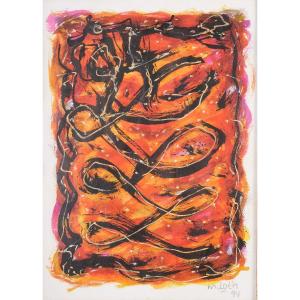
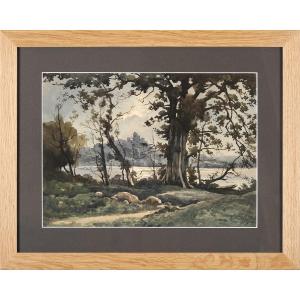


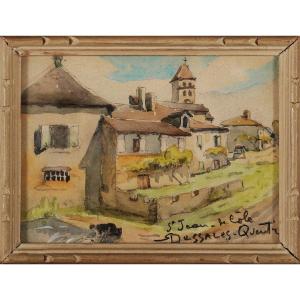






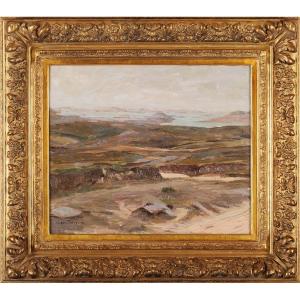

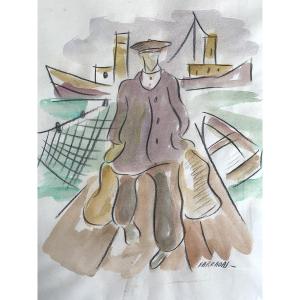

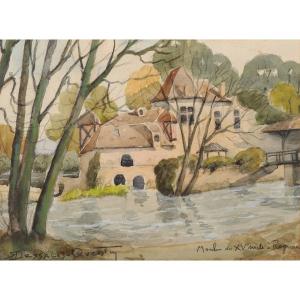




 Le Magazine de PROANTIC
Le Magazine de PROANTIC TRÉSORS Magazine
TRÉSORS Magazine Rivista Artiquariato
Rivista Artiquariato